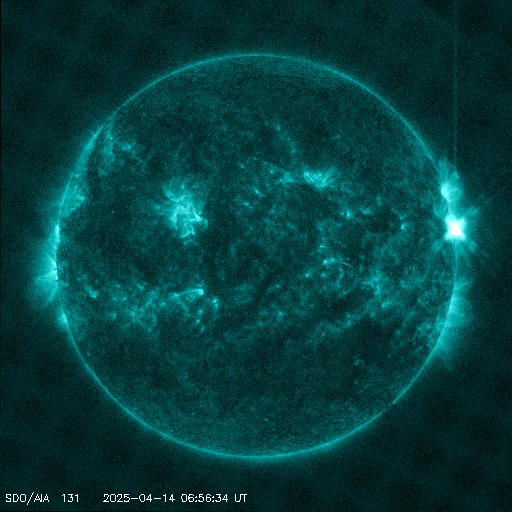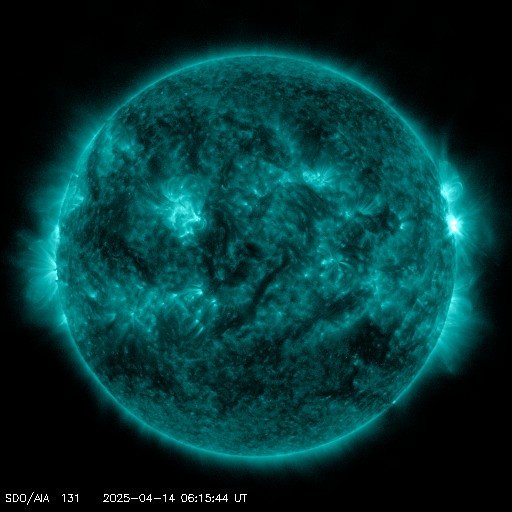Viewing archive of Tuesday, 9 February 2021
Daily bulletin on solar and geomagnetic activity from the SIDC
Issued: 2021 Feb 09 1230 UTC
SIDC Forecast
Solar flares
Quiet conditions (<50% probability of C-class flares)
Geomagnetism
Quiet (A<20 and K<4)
Solar protons
Quiet
| 10cm flux | Ap | |
|---|---|---|
| 09 Feb 2021 | 073 | 007 |
| 10 Feb 2021 | 073 | 006 |
| 11 Feb 2021 | 073 | 004 |
Bulletin
Solar activity was at very low levels. There were no numbered sunspots on the solar disc and no significant flares were detected in the last 24 hours. The flaring activity is expected to remain low in the next 24 hours.
No Earth-directed coronal mass ejections (CMEs) were detected in the available coronagraph imagery.
The greater than 10 MeV proton flux was at nominal levels in the past 24 hours and is expected to remain so in the next 24 hours. The greater than 2MeV electron flux remained under the 1000 pfu threshold and is expected to remain so in the next 48 hours. The 24h electron fluence was at normal levels and is expected to remain so in the next 48 hours.
Over the past 24 hours the solar wind conditions (ACE and DSCOVR) were enhanced under the ongoing influence of a HSS related to a patchy positive polarity coronal hole. The total magnetic field varied between 2.4 nT an 7.5 nT, while the Bz component oscillated between -7.3 nT and 6.1 nT. The phi angle remained predominantly in the positive sector. The solar wind speed started around 400 km/s and sporadically increased to 518 km/s.
The geomagnetic conditions over the past 24 hours were predominantly quiet with an isolated 3-hour long period of globally and locally unsettled conditions. Quiet to unsettled conditions are expected for the next 24 hours. Isolated active periods remain possible as the influence of the coronal hole HSS wanes.
Today's estimated international sunspot number (ISN): 004, based on 12 stations.Solar indices for 08 Feb 2021
| Wolf number Catania | 000 |
| 10cm solar flux | 074 |
| AK Chambon La Forêt | /// |
| AK Wingst | /// |
| Estimated Ap | 007 |
| Estimated international sunspot number | 003 - Based on 16 stations |
Noticeable events summary
| Day | Begin | Max | End | Loc | Strength | OP | 10cm | Catania/NOAA | Radio burst types | |
|---|---|---|---|---|---|---|---|---|---|---|
| None | ||||||||||
Provided by the Solar Influences Data analysis Center© - SIDC - Processed by SpaceWeatherLive
All times in UTC
Current data suggests there is a slight possibility for aurora to appear at the following high latitude regions in the near future
Whitehorse, YTAnchorage, AK, Fairbanks, AK, Juneau, AK
Latest news
Latest forum messages
Support SpaceWeatherLive.com!
A lot of people come to SpaceWeatherLive to follow the Sun's activity or if there is aurora to be seen, but with more traffic comes higher server costs. Consider a donation if you enjoy SpaceWeatherLive so we can keep the website online!

Latest alerts
07:09 UTC - Solar flare
Moderate M4.28 flare from sunspot region 4055
06:48 UTC - Radio Blackout
Minor R1 radio blackout in progress (≥M1 - current: M1.53)
06:24 UTC - Solar flare
Moderate M1.49 flare from sunspot region 4055
06:06 UTC - Radio Blackout
Minor R1 radio blackout in progress (≥M1 - current: M1.16)
04:45 UTC - Geomagnetic activity
Active geomagnetic conditions (Kp4) Threshold Reached: 04:29 UTC
Space weather facts
| Last X-flare | 2025/03/28 | X1.1 |
| Last M-flare | 2025/04/14 | M1.4 |
| Last geomagnetic storm | 2025/04/06 | Kp5 (G1) |
| Spotless days | |
|---|---|
| Last spotless day | 2022/06/08 |
| Monthly mean Sunspot Number | |
|---|---|
| March 2025 | 134.2 -20.4 |
| April 2025 | 132.1 -2.1 |
| Last 30 days | 132.4 -10.7 |





